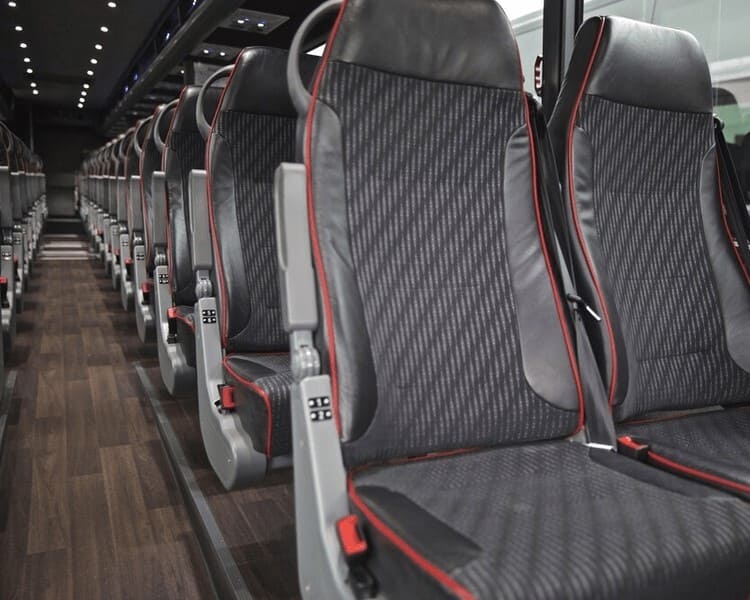20 Handy Ways For Choosing Event Transportation Sites
20 Handy Ways For Choosing Event Transportation Sites
Blog Article
Top 10 Tips For Flexible Scheduling Of Employee Shuttle Transportation
Here are ten tips on how to plan and be flexible when it comes to employee shuttle services.
1. Conduct an Employee Needs Assessment
Begin by looking at your employees' scheduling requirements. Focus groups or surveys can provide you with information about the preferred time for shuttles, shift pattern, and other needs specific to them. Understanding the various demands of your employees is crucial to create a schedule that accommodates as many employees as possible.
2. Set up a flexible Scheduling System
Develop a flexible schedule that allows changes to be made based upon employee needs. Consider offering shuttles at different hours of the day to accommodate a variety of schedules and patterns. It is possible to provide shuttle services in the morning hours to first-shift employees and mid-day shuttles for flexible schedule workers, as well as late-night shuttles for third or second shift employees.
3. Utilize real-time data to make adjustments
Use technology to provide real-time information about employee and traffic use. This information can assist you make educated decisions about when to add new routes or alter the times of shuttles. By analyzing data about patterns of usage, it's possible to optimize the schedule of shuttles in order to meet the demand.
4. Create a Reservation System
Consider installing an automated shuttle system. It allows employees to book their seats in advance, thereby making sure that there are enough seats to satisfy demand. Reservation systems can aid in identifying peak times and adjust scheduling accordingly, enhancing overall efficiency.
5. How do you communicate schedule changes Effectively
Ensure that any changes to the schedule of shuttles are communicated clearly and promptly to everyone in the company. Make sure employees are informed making use of multiple communication channels including email, intranets or mobile apps. Communication is key to avoiding confusion and allowing employees to plan their commutes.
6. Monitor Peak Use Time
Continuously monitor the use of shuttles to find times of peak demand is highest. You can use this information to adjust the schedule and offer more shuttles in peak times. By anticipating peak demand, you can increase service reliability and decrease the wait time for staff.
7. Services On Demand Services
It is also possible to explore the possibility to provide services on-demand for employees who have different schedules. Apps that let employees order shuttles when they need to can be utilized. On-demand services may increase flexibility and accommodate employees with irregular hours.
8. Consider Hybrid Models
Utilize hybrid scheduling models to blend fixed routes with options. For example, you may have set routes during high traffic times, and also allow for flexibility in pickups and drop-offs at non-peak times. This can help maximize efficiency and accommodate the employees' diverse schedules.
9. Gather Feedback for Continuous Improvement
Instruct managers and employees to share their feedback about the shuttle schedule as well as the overall transportation service. Regularly reviewing feedback will allow you to identify any areas in need of improvement and make the needed changes to the schedule. Participating in the process can foster a strong feeling of ownership among your employees and make your shuttle service more effective.
10. Assess and adapt to seasonal changes
Be alert to seasonal changes that could affect employee schedules, including holiday seasons, summer vacations and changes in working hours. Always review and update the schedule of shuttles to adapt to changes in employee availability. Flexible scheduling during these times could aid in maintaining high levels of participation as well as satisfaction.
These suggestions can help you create an efficient and flexible schedule system to allow employees shuttle transport and ensure that it meets the needs of your workforce and improves efficiency. See the best employee shuttle tips for site examples including dallas airport shuttle to hotels, airport shuttle service near me, airporter bus, airport service, shuttle to airport atlanta, bus airport shuttle, airporter bus, shuttle to lax, airport airport shuttle, airport airport shuttle and more.
Top 10 Tips On How To Budget And Calculate The Cost Of A Corporate Transportation Service
Here are 10 tips to help you determine the cost and budget of a corporate transportation service.
1. Conduct a thorough Analysis of Costs
Conduct a thorough cost analysis on every aspect. This includes vehicle leasing, fuel costs and driver wages along with maintenance and insurance fees and any other additional fees for permits and parking. Knowing the total cost will assist in creating the most realistic budget.
2. Create an Clear Budget Framework
Create a budget plan that outlines the amount your company is willing to invest in transportation. The budget should contain the total cost of transportation and offer the flexibility to cover unexpected costs. A budget can assist you in making better choices and will help keep your expenses for transportation in check.
3. Explore a variety of transportation options
Compare the options of transportation options that are available to you such as shuttles, buses or rideshare services. Review the costs of each option while considering aspects like convenience and comfort. Selecting the best solution that is able to meet the requirements of the attendees will optimize the budget for transportation.
4. How to Negotiate with Transportation Providers
You can negotiate the contract to ensure you get the best price. A lot of transportation companies offer discounts to big events or bulk bookings. Establishing a strong relationship with providers will result in lower rates and better service, which ultimately benefits your budget.
5. Calculate your fuel expenses
Fuel costs are a major factor in transportation expenses. Consider the distance from the venue and the amount of trips expected. Cut costs by negotiating efficient vehicle types with your transportation service.
6. Include Contingency Funds
Allocate a portion to contingency fund for unexpected expenses. Transportation can be unpredictable and could result in issues such as vehicle breakdowns or additional travel required. Contingency funds let you handle these problems without having to pay more or compromise service quality.
7. Take into consideration Group Discounts and Packages
Find packages or discounts for groups that transportation companies offer. There are many companies that offer reduced rates to large groups or corporate functions. This can lead to significant savings. It is possible to inquire about discounted packages that may include additional services like on-site assistance, or even additional vehicles.
8. Monitor and track expenses
Maintain a close watch on all transportation-related expenses throughout the planning and execution phases. Excel spreadsheets and budgeting tools can be used to monitor costs real-time. Monitoring expenditures can help find areas to save money and ensures the budget stays on track.
9. Collect feedback for future budgeting
Following the event, collect feedback from guests about their transportation experience and the associated costs. Analyzing feedback can help you gain insights into the performance of the transportation service as well as guiding future budgeting. Knowing what went well and what did not will assist you in planning your budget for future events.
10. Examine the your Total Cost of Ownership
When considering transportation options take into consideration the total cost of ownership (TCO) for vehicles. It does not only include the price of the vehicle as well as all other ongoing costs including maintenance, depreciation, and insurance. Understanding TCO is essential to make well-informed decisions, that will help you to balance the initial cost with long-term financial implications.
If they follow these guidelines, companies can control costs and budgets efficiently for corporate transportation. Budget planning is crucial in order to make sure that transportation needs for an event are covered, but it also helps to ensure that the event is successful because it allows the guests to concentrate on the event and not the logistical issues. Effective budgeting and cost control enhance the organization's reputation and show a commitment to efficiency and accountability. Follow the top event transportation service blog for blog advice including manager transport, transportation companies, transportation specialists, intl logistics, company transport, transportation services, group transport, global logistics co, specialized transportation inc, transporting buses and more.